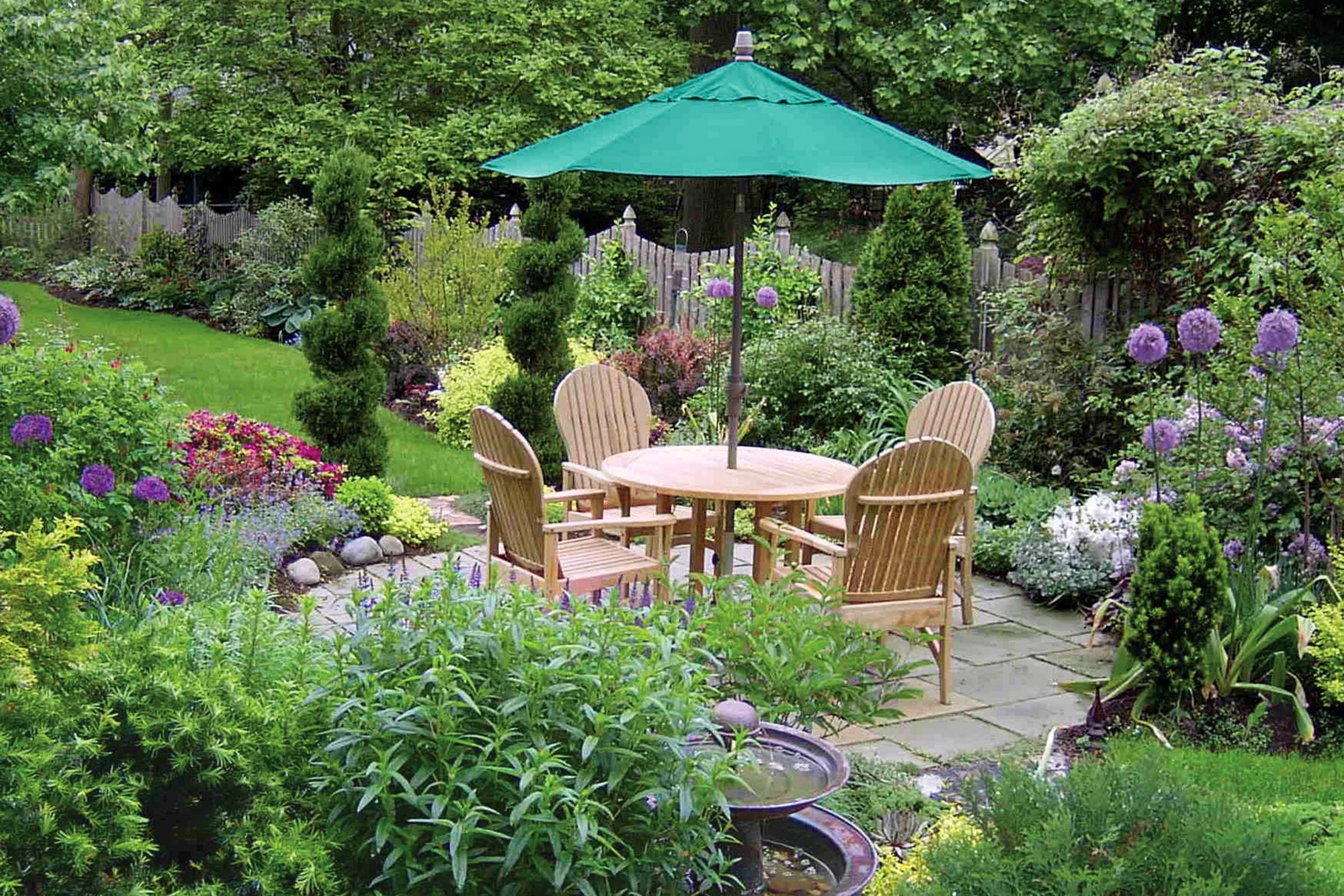A relaxing garden retreat can turn your backyard into a personal oasis. This guide will walk you through the process of creating a tranquil haven, drawing inspiration from Maria Hasenecz’s journey of renovating the garden outside her 1890 farmhouse in Wyndmoor, Penn.
Before: A Desolate Yard
Hasenecz’s yard was desolate when she moved in: neglected and weedy, with just some leggy rhododendrons, Norway maples, and a lone purple coneflower still standing. The previous owner, who’d been there for 30 years, couldn’t keep up the place.
The challenges faced by Hasenecz were typical of many homeowners looking to create a garden retreat:
- Lack of privacy from neighboring properties
- Noise pollution from nearby traffic
- The need for secure fencing for pets
- An uninspiring planting strip between the driveway and the house
These issues presented an opportunity to reimagine the space entirely, turning a barren yard into a lush, inviting garden retreat.
The Garden Plan
Hasenecz’s approach to her 75-by-200-foot lot incorporated several key design elements. She used curved beds and borders to create winding paths through the property and strategically placed plants to increase privacy and reduce noise. The garden plan also included created stand-alone areas, like a patio and oasis.
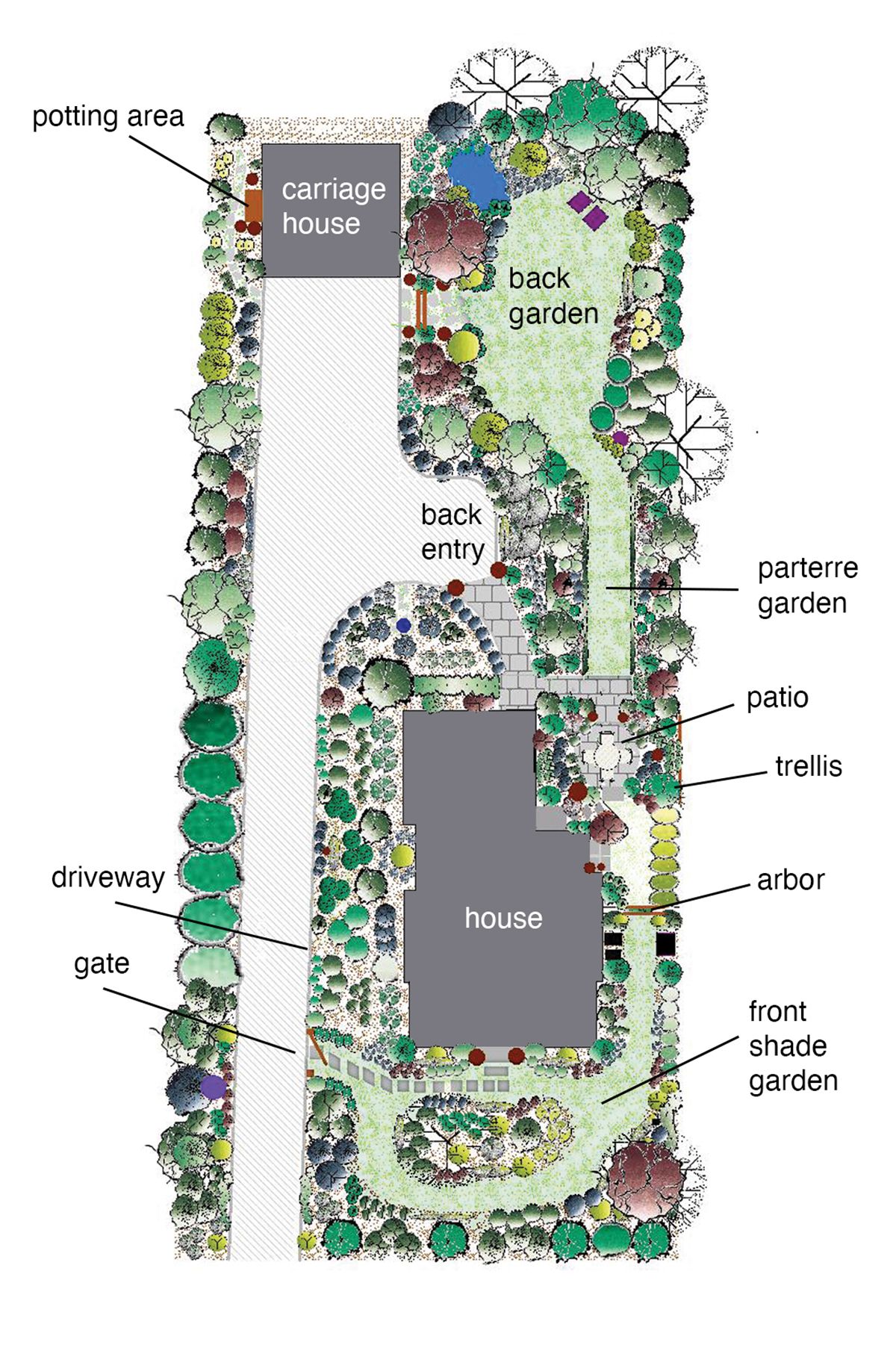
After: A Relaxing Garden Retreat
Hasenecz had created a garden at her old house on a postage-stamp-size lot in the city, so this 75-by-200-foot parcel seemed huge by comparison.
She started around the foundation, planting Pieris japonica for an evergreen structure and hydrangeas for color. To define the yard’s perimeter and contain her pet, she added a cedar fence and planned to let it weather to blend into the privacy plantings of trees and shrubs she planned to layer in front of it.
Now, the area overflows with hosta and other shade-loving plants, softening the home’s masonry walls. Next, we’ll walk through a couple of key areas of the new garden.
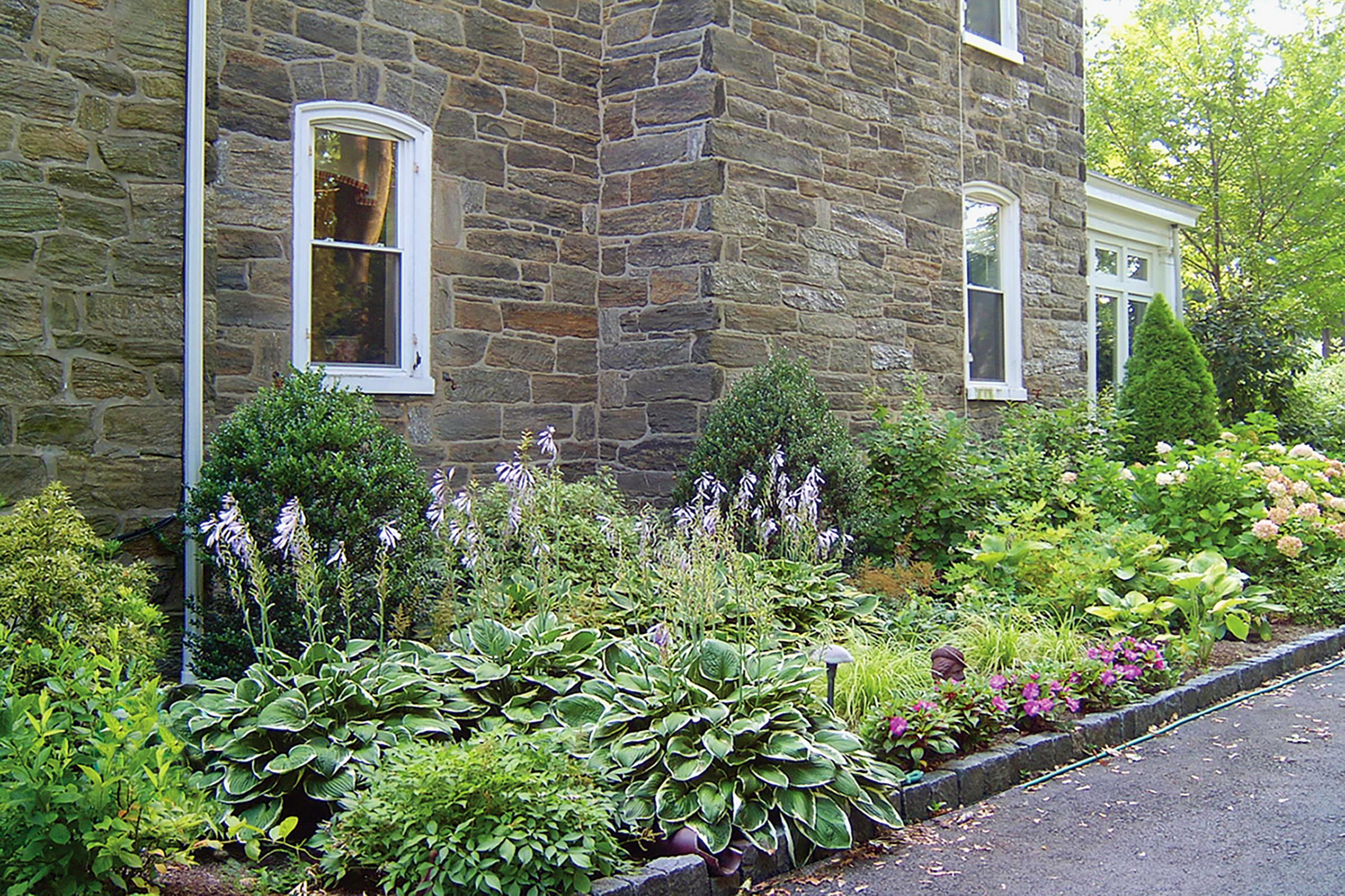
Outdoor Rooms
Hasenecz’s garden incorporates several areas, each with its own purpose:
- A shady front garden for a welcoming entrance
- A patio for dining with views of formal beds and a lawn
- A backyard oasis for relaxation, complete with Adirondack chairs and the sound of flowing water
Creating varied spaces allows you to provide areas for different activities and moods within your garden. Hasenecz needed a place to sit and dine outside, so she installed a circular flagstone patio near the back kitchen door.
To size it right, she planned for a 42-inch table and four seats, with room to pull out the chairs and walk comfortably around them. Today it is surrounded by lush perennial gardens that extend to the boundary fence.
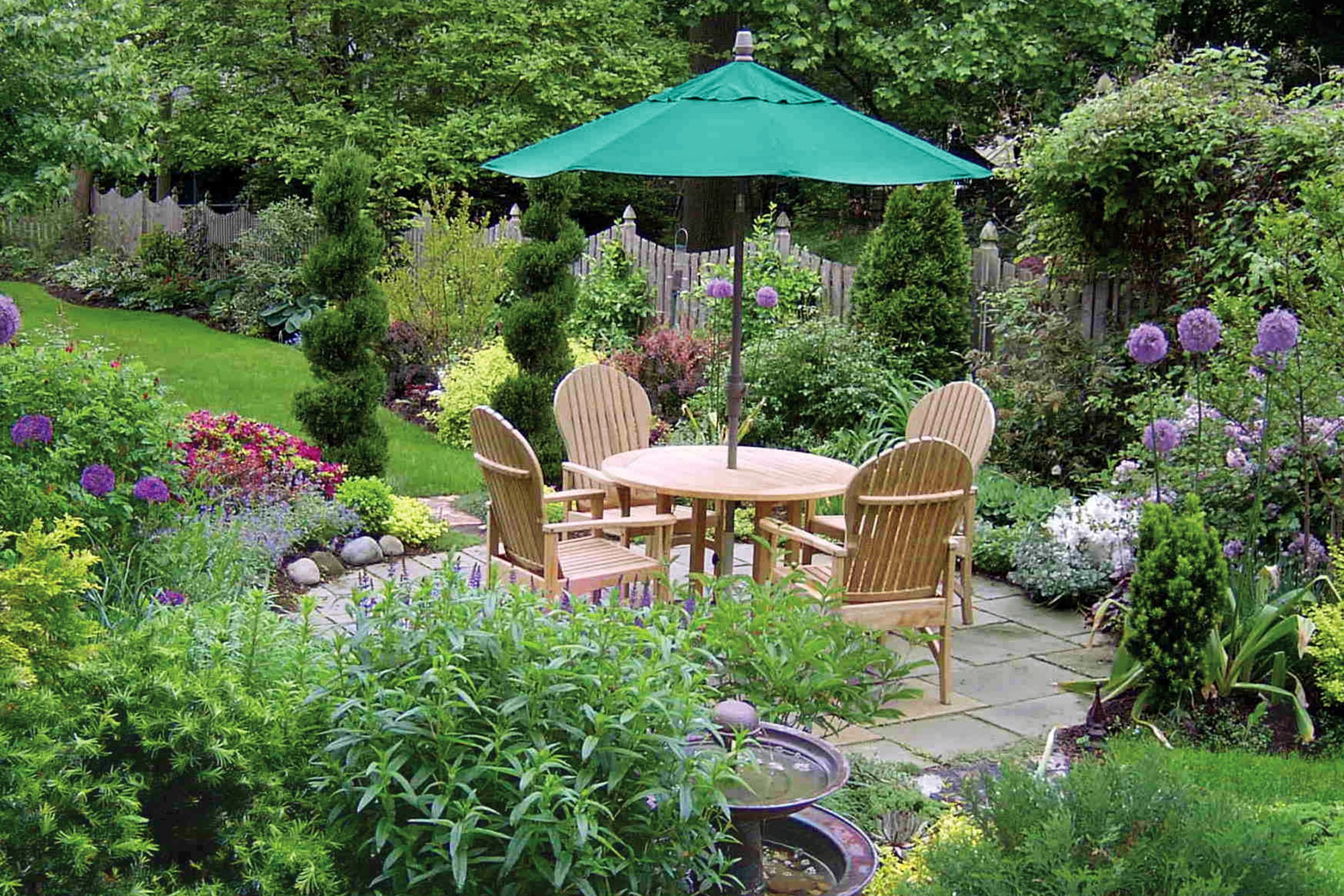
When planning your own dining area, consider the following:
- Allow at least 3 feet of clearance around the table for comfortable seating.
- Choose durable, weather-resistant materials for your patio surface.
- Incorporate nearby plantings to create a lush, intimate atmosphere.
- Consider adding outdoor lighting for evening enjoyment.
Surrounding your dining area with perennial gardens creates a sense of enclosure and privacy.
Formal Structure
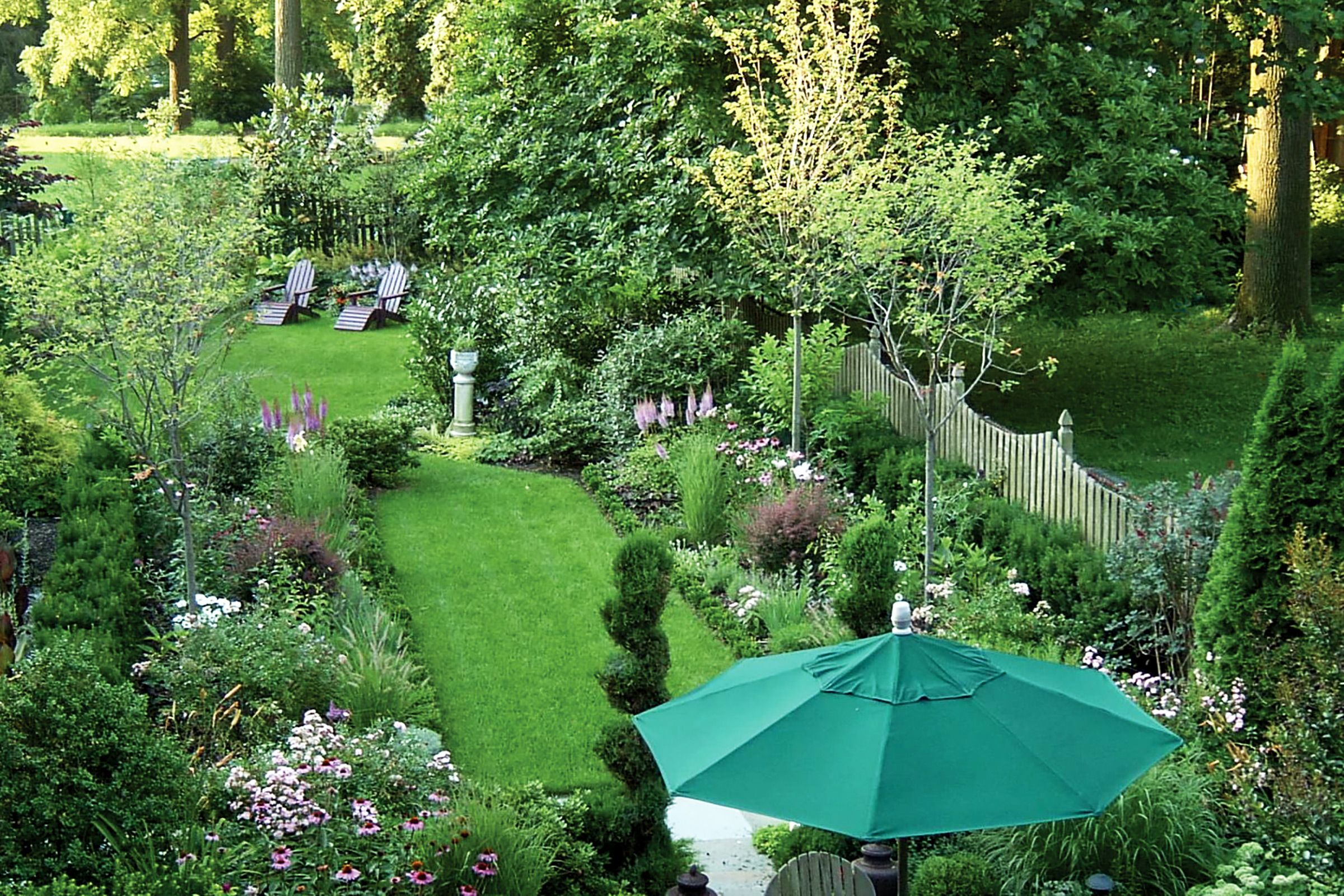
Topiaries at the far end of the patio frame the view of a “parterre” garden Hasenecz later designed: formal, mirror-image beds that flank a lawn path that leads to a focal-point urn, then wends its way to a back sitting area with a small pond.
When adding formal structure to your garden retreat, consider these elements:
- Symmetrical planting beds or borders
- Topiaries or sculpted shrubs
- Straight paths or allées
- Focal points such as statuary, urns, or water features
By combining formal structures with relaxed plantings, your garden will have both order and natural beauty.
Plant for Privacy
Creating a sense of seclusion is key to a relaxing garden retreat. Hasenecz’s approach to privacy planting includes an island of greenery in the front yard to buffer the house from the street, as well as a mix of Leyland cypress, arborvitae, hollies, and flowering trees along the driveway to screen neighboring properties. A rose-and-clematis-covered trellis against the fence blocks views from adjacent houses.
When planning your privacy plantings, consider a mix of evergreen and deciduous plants for year-round screening. Layer plants of varying heights to create a natural, organic look while effectively blocking sightlines.
Ornamentation
Hasenecz’s garden incorporates various ornamental features, including a vine-covered arch in the side yard, a pole-mounted birdhouse, colorful containers with seasonal plantings, and garden art and sculptures throughout.
When selecting ornaments for your garden, choose pieces that complement your overall design. Keep in mind that less is often more–carefully placed ornaments can have a greater impact than an abundance of decorative elements.

Creating Vistas
Thoughtfully designed vistas within your garden retreat can create a sense of depth. Hasenecz’s garden includes a vine-covered arch in the side yard that frames the view of a pole-mounted birdhouse in the front yard, with white-blooming hydrangeas along the edges.
To create engaging vistas in your own garden:
- Use structures like arches, pergolas, or arbors to frame views
- Place focal points at the end of paths or sight lines
- Incorporate plants with varying heights to create layers of interest
- Consider the views from inside your home as well as within the garden
Designing vistas encourages exploration and enjoyment from different perspectives. Each vista can serve as a visual reward, drawing visitors deeper into the garden’s beauty.
Using Color
Hasenecz added color to her garden by using colorful containers, such as tiered wire planters with chartreuse sweet potato vine, pink impatiens, and red geraniums.
When planning your color scheme:
- Choose a palette that complements your home’s exterior
- Consider using color to create different moods in various garden rooms
- Incorporate both flowers and foliage for year-round color interest
- Use containers to add pops of color in areas where in-ground planting may be challenging
Color can also come from hardscaping elements, such as painted fences or brightly colored furniture.
Light and Sound
To further elevate your garden retreat, consider elements that enhance its ambiance. Hasenecz added soft outdoor lighting to her garden and strategically placed wind chimes, providing a gentle background melody.
To enhance the ambiance in your garden:
- Install outdoor lighting to highlight pathways, plants, and focal points
- Add soothing sounds with water features or wind chimes
- Use scented plants like lavender or jasmine to create a sensory experience
These enhancements can turn any garden into a true sanctuary, offering relaxation for all the senses and ensuring that the space feels inviting and restful.
Our Conclusion
When designing your own garden retreat, first determine your primary goals. Are you looking for privacy, or do you prefer a pet-friendly space? Sketch a rough layout, considering the views from inside your home as well as within the garden.
By incorporating elements such as outdoor rooms, privacy plantings, formal structure, and thoughtful ornamentation, you can design a unique and intriguing garden. Remember that garden design is an ongoing process–allow your space to evolve as you discover what works best for your lifestyle and preferences.
